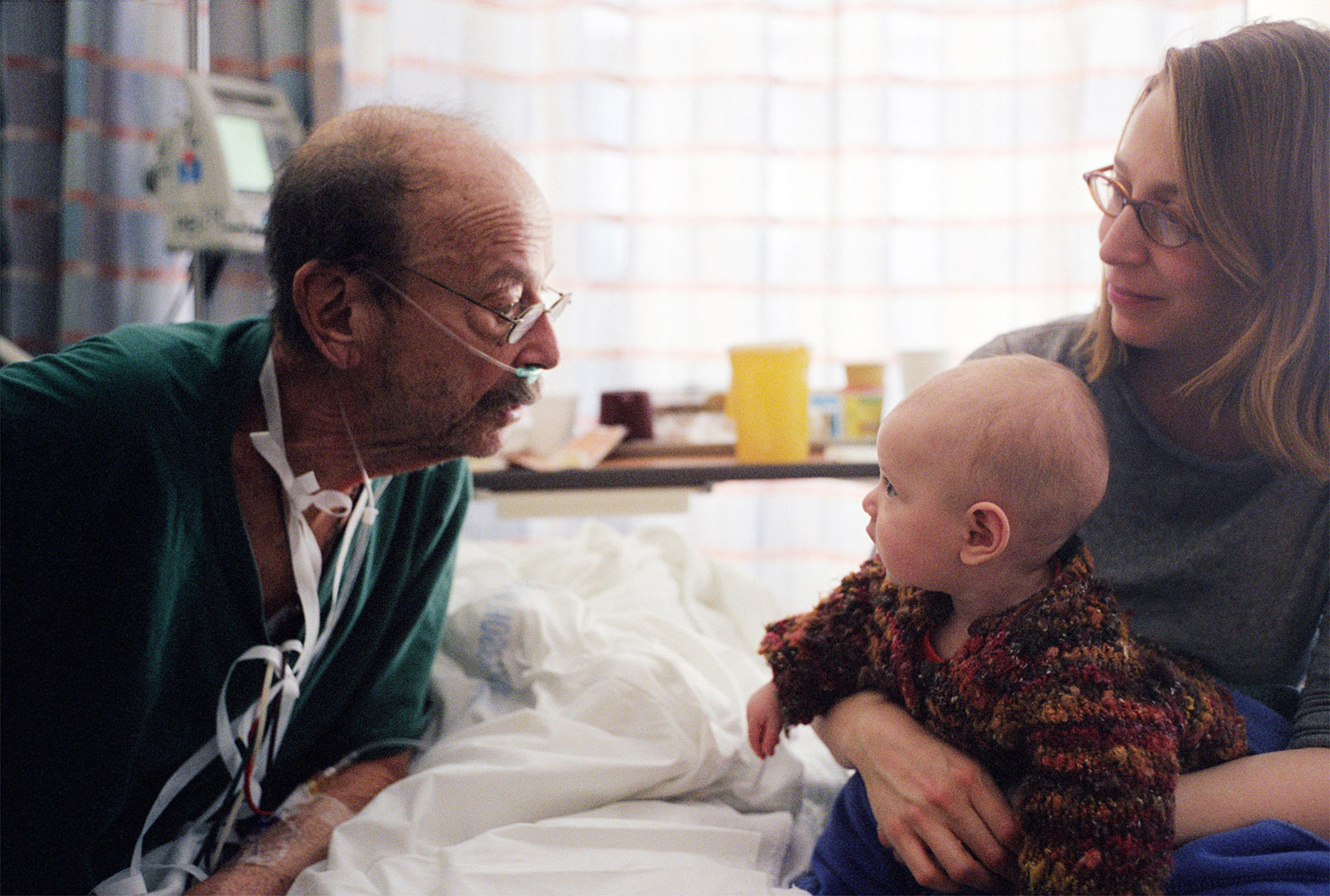
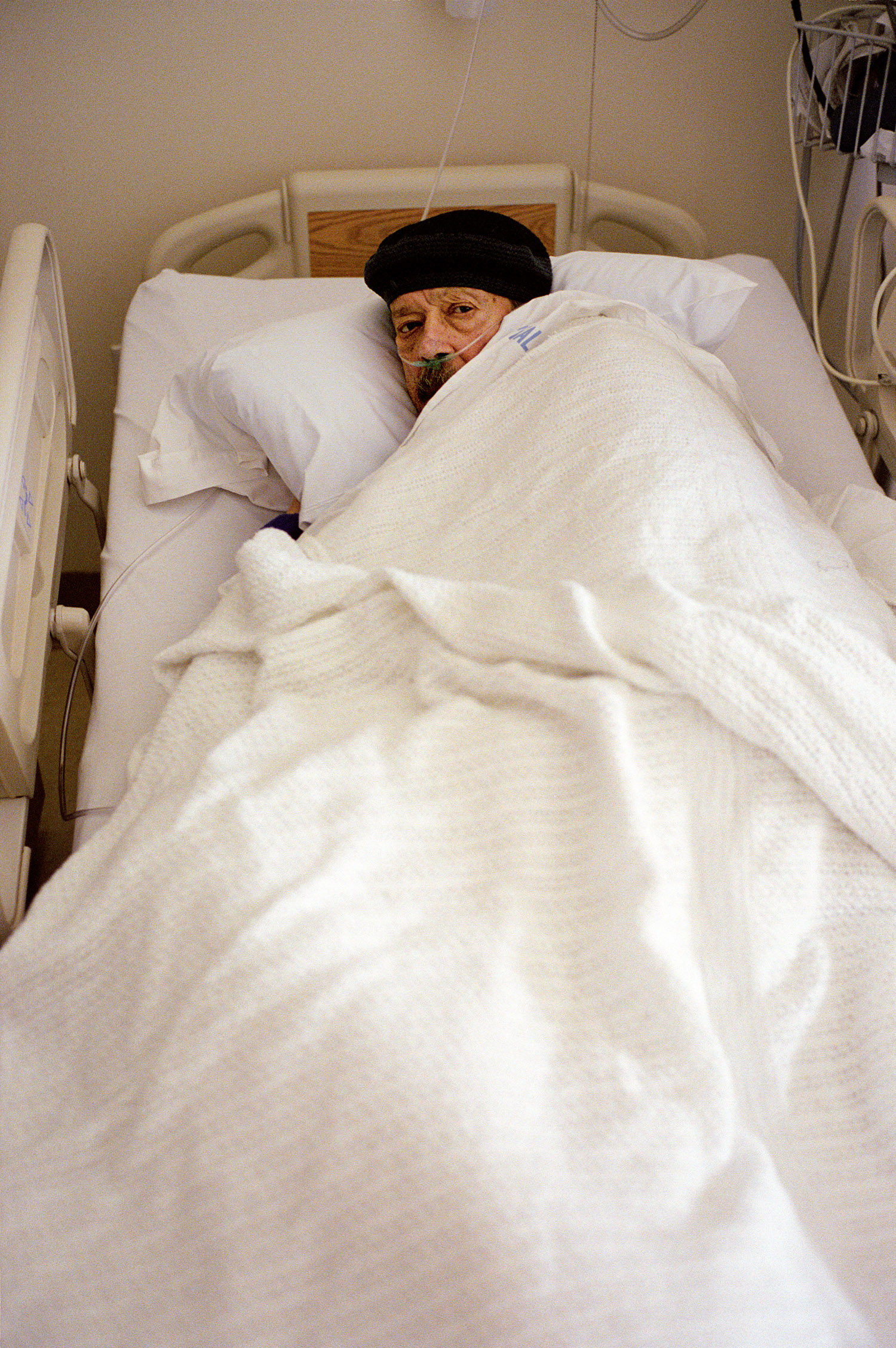
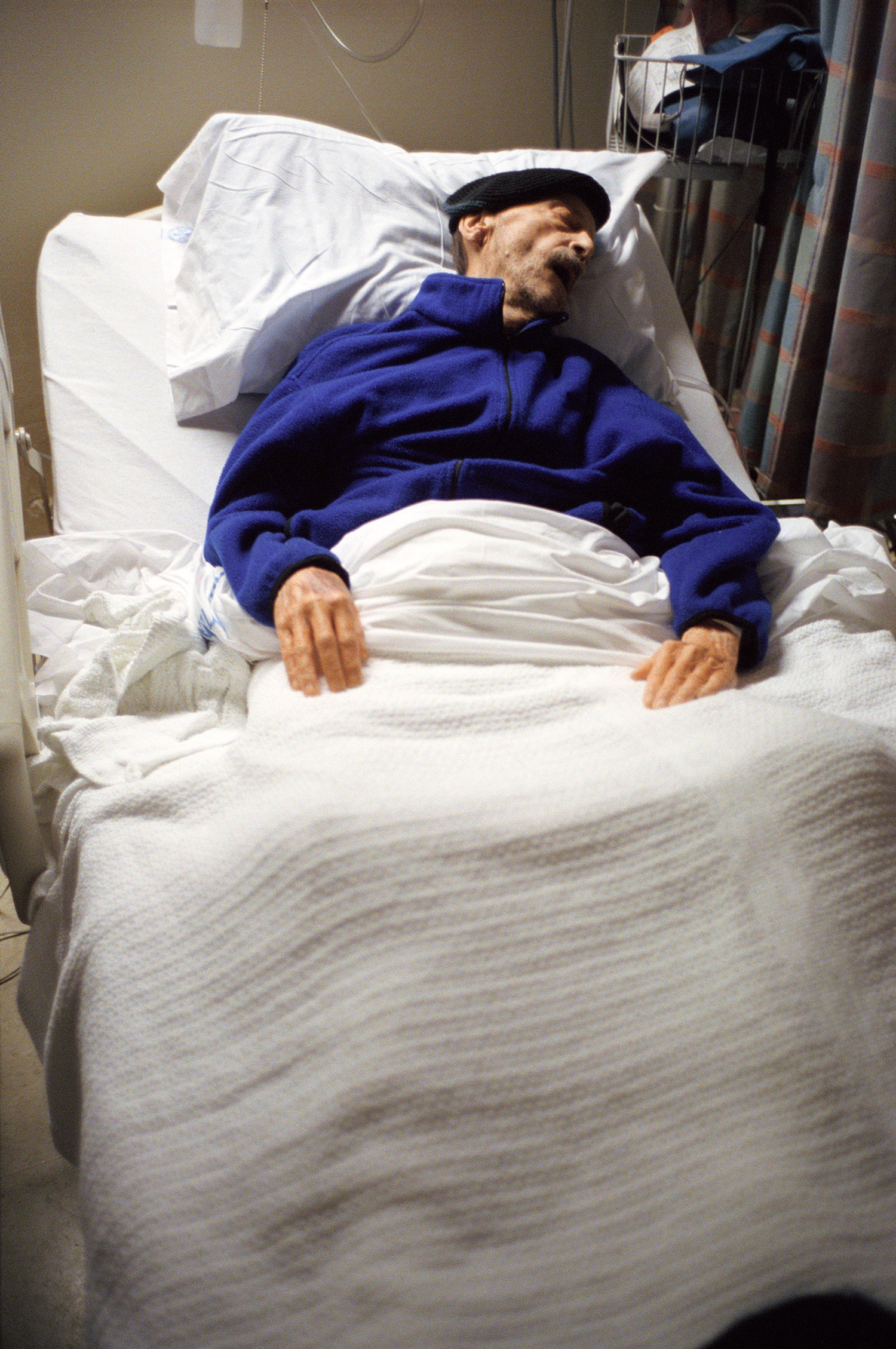
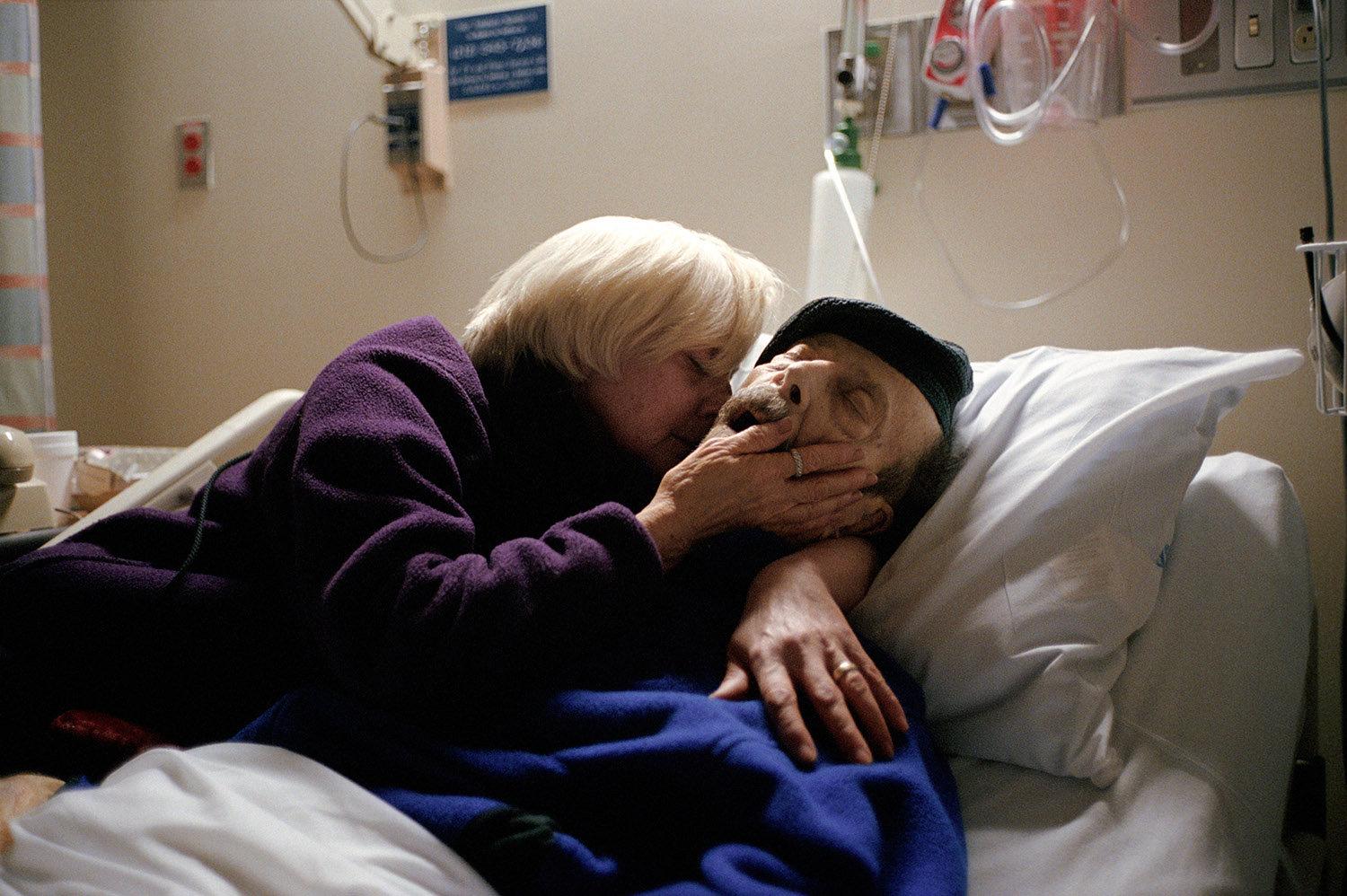
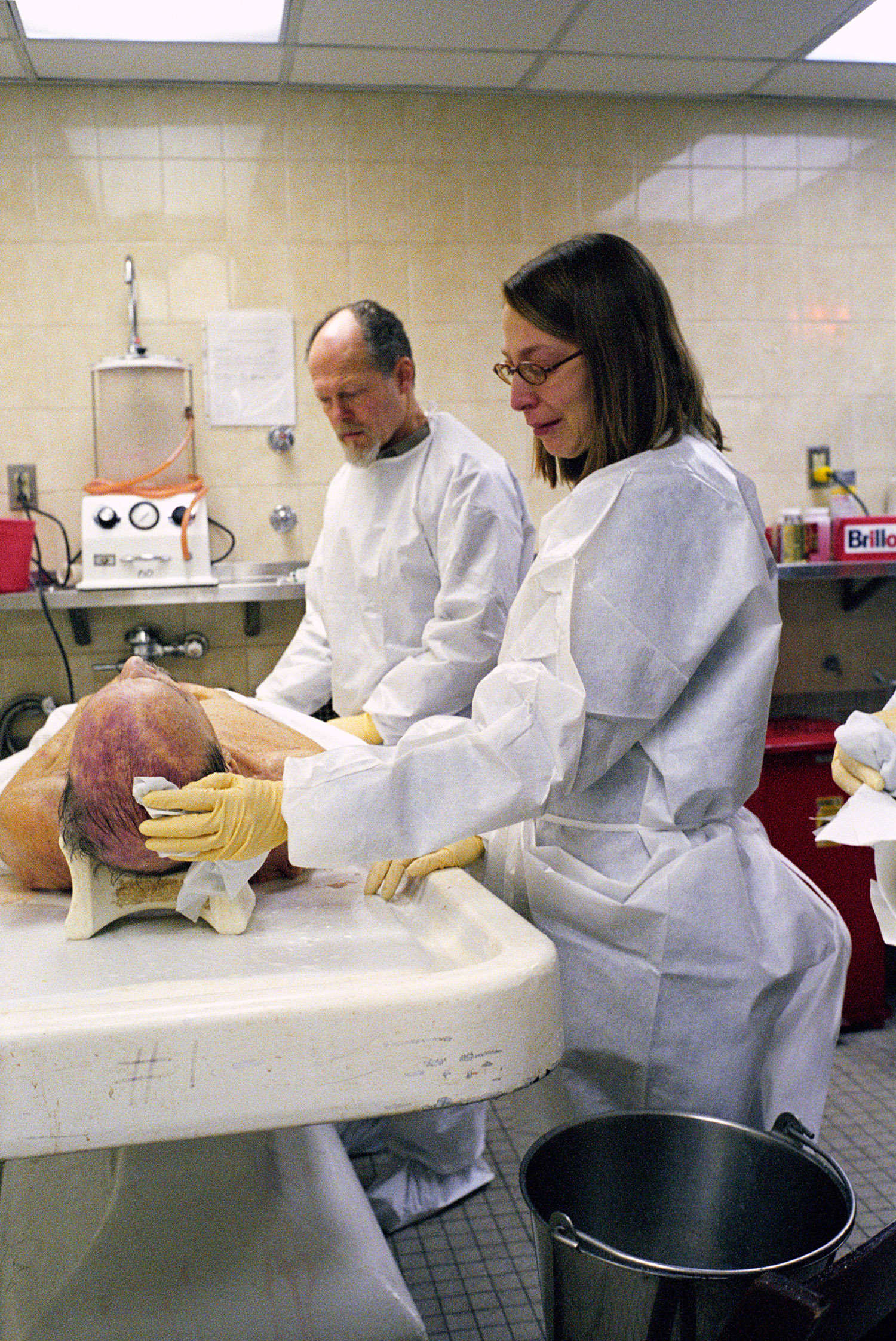
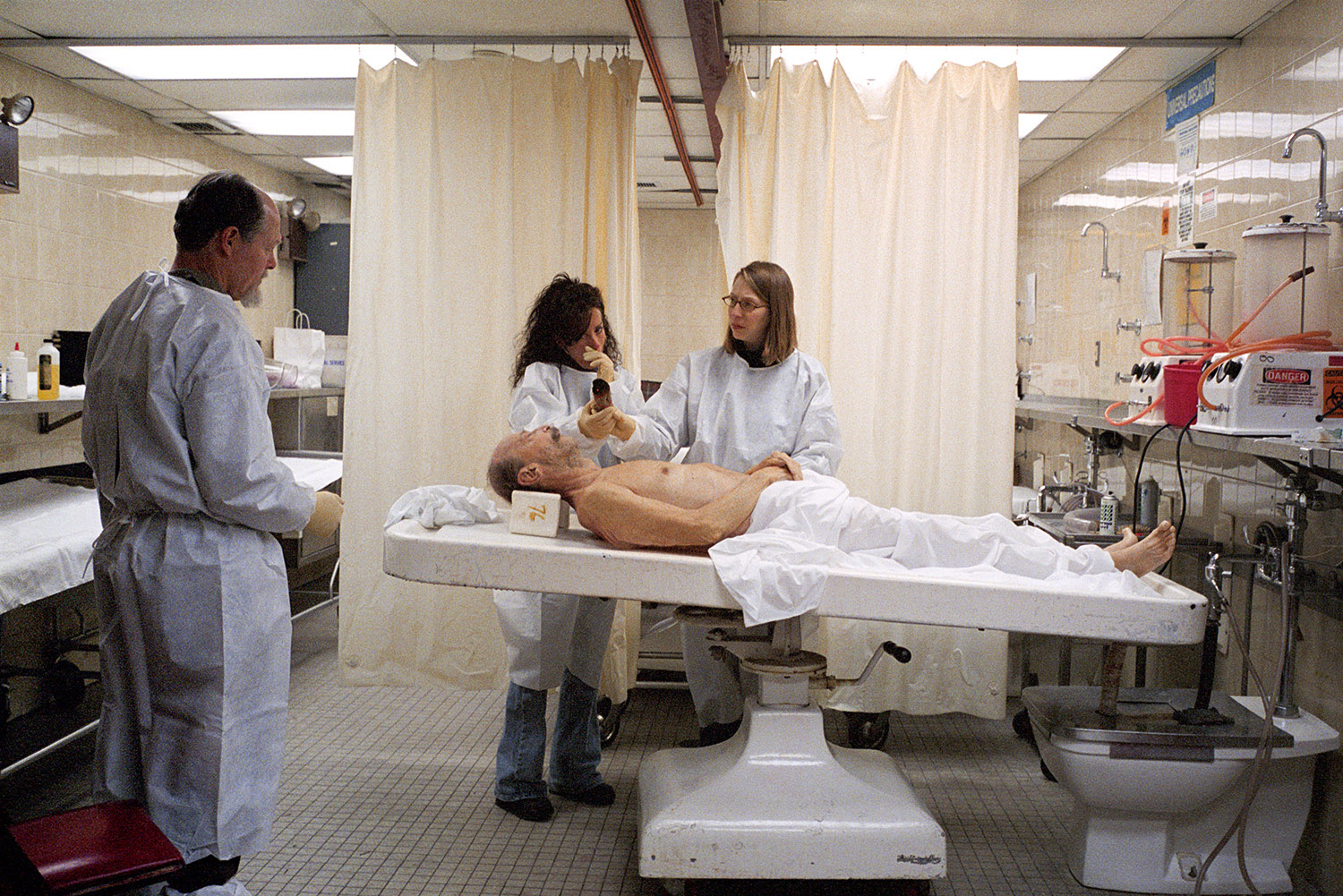
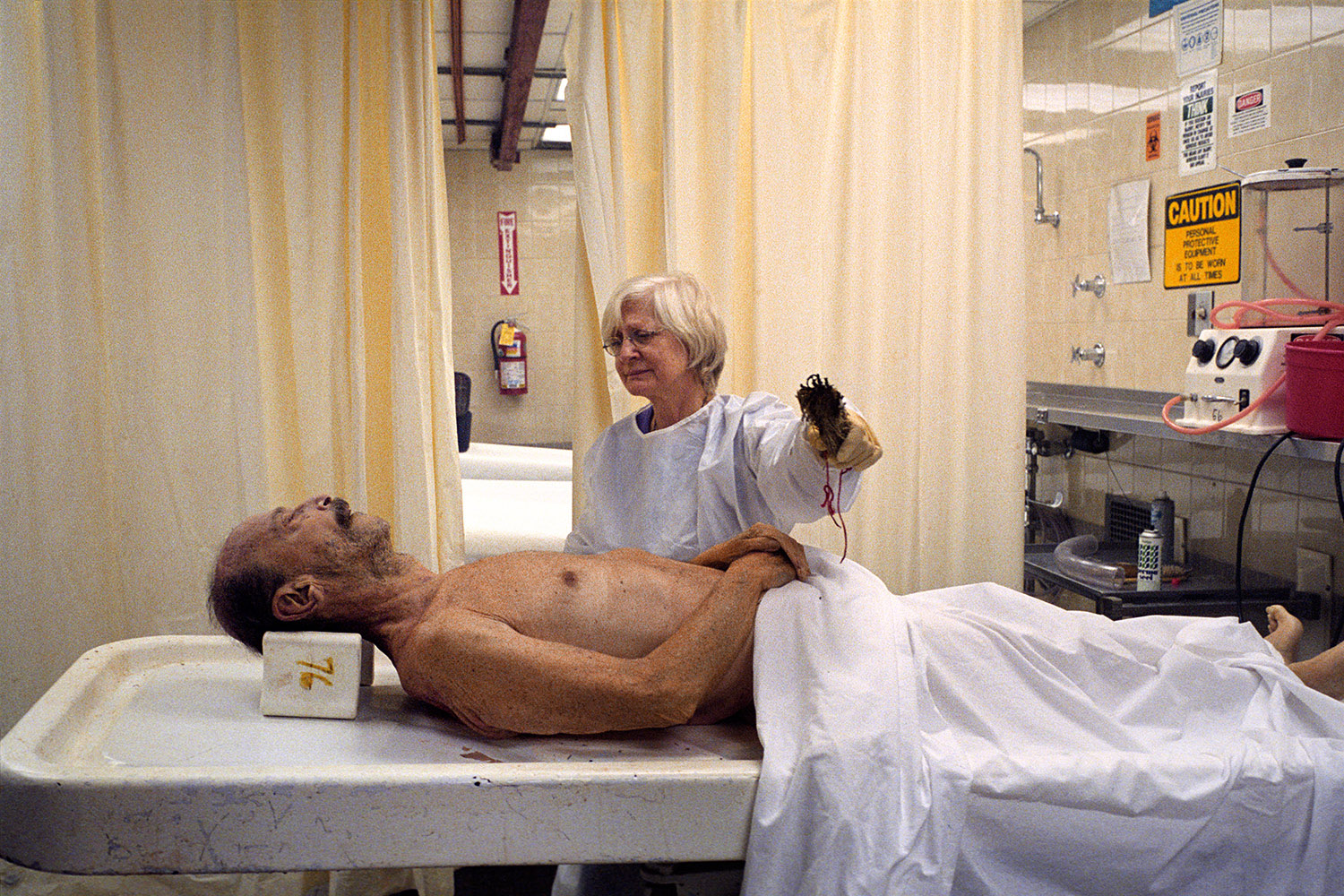
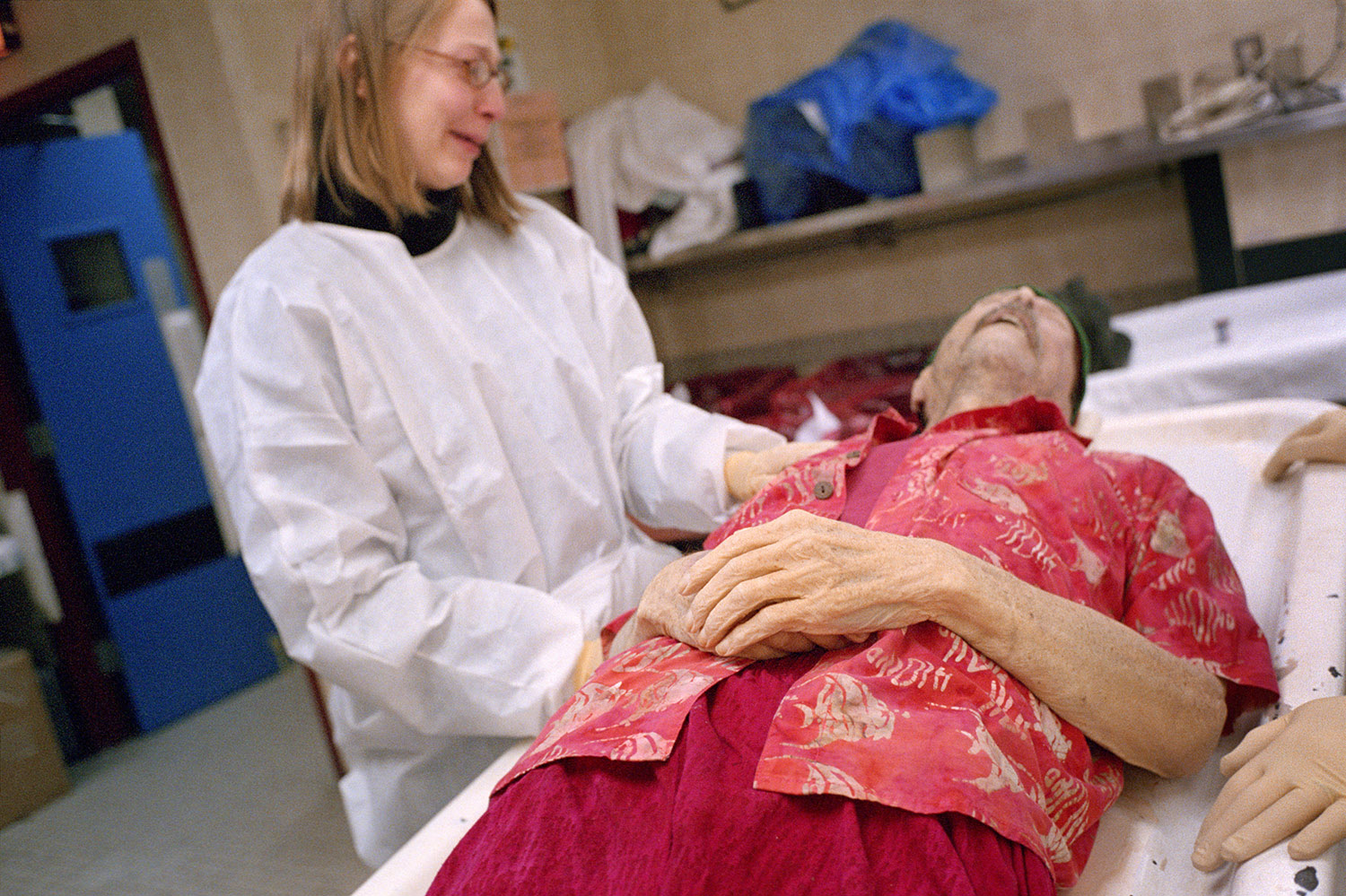
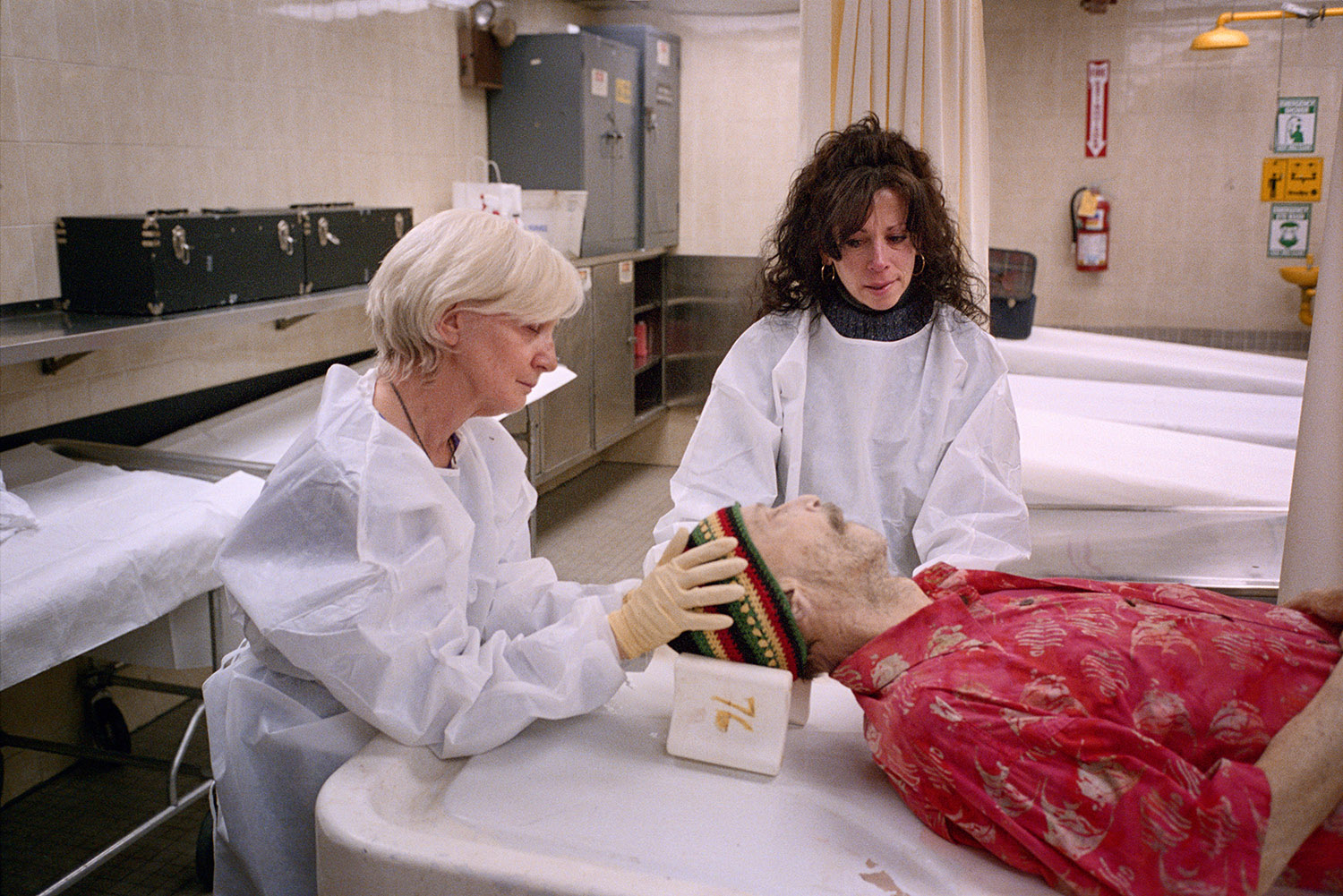
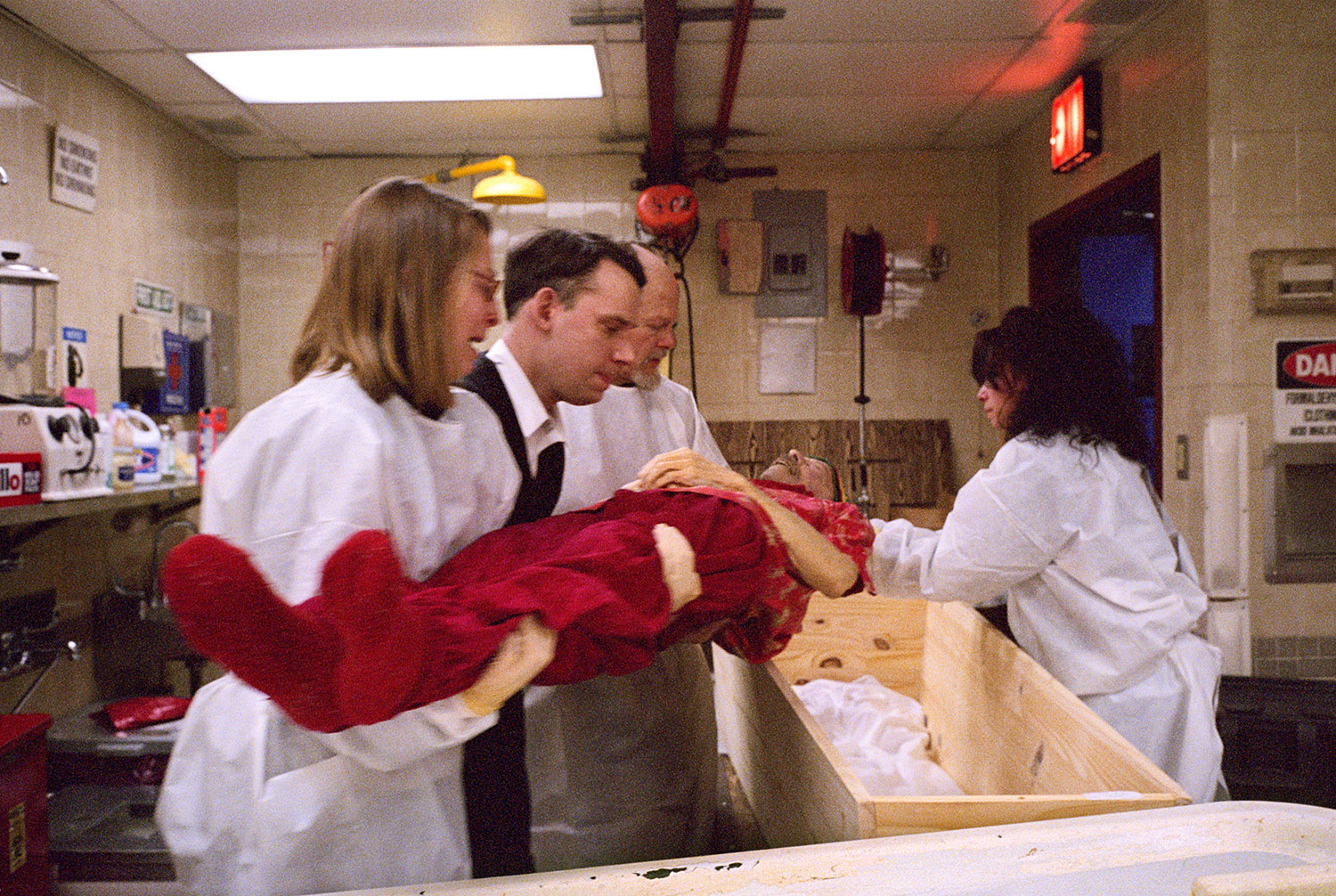
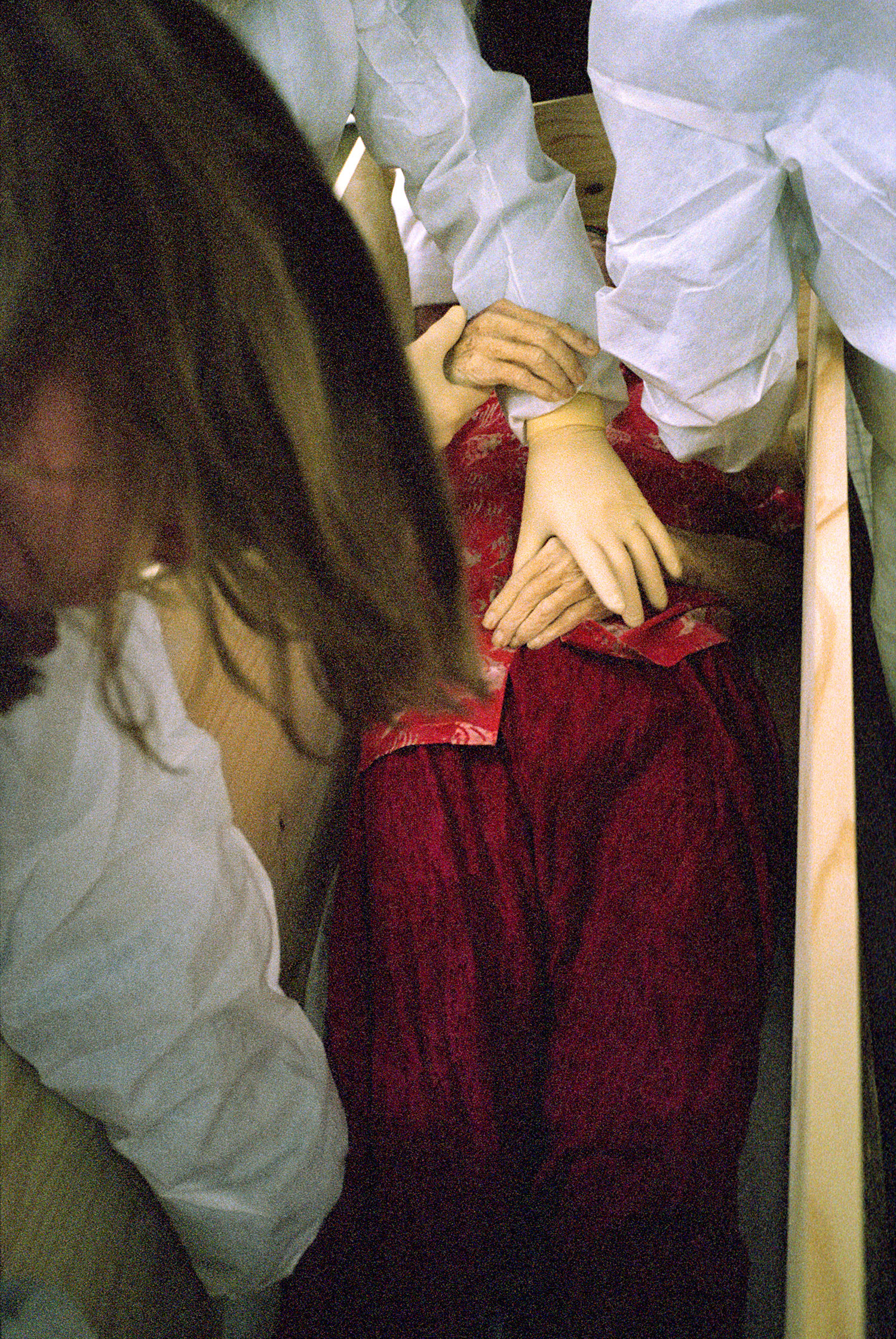
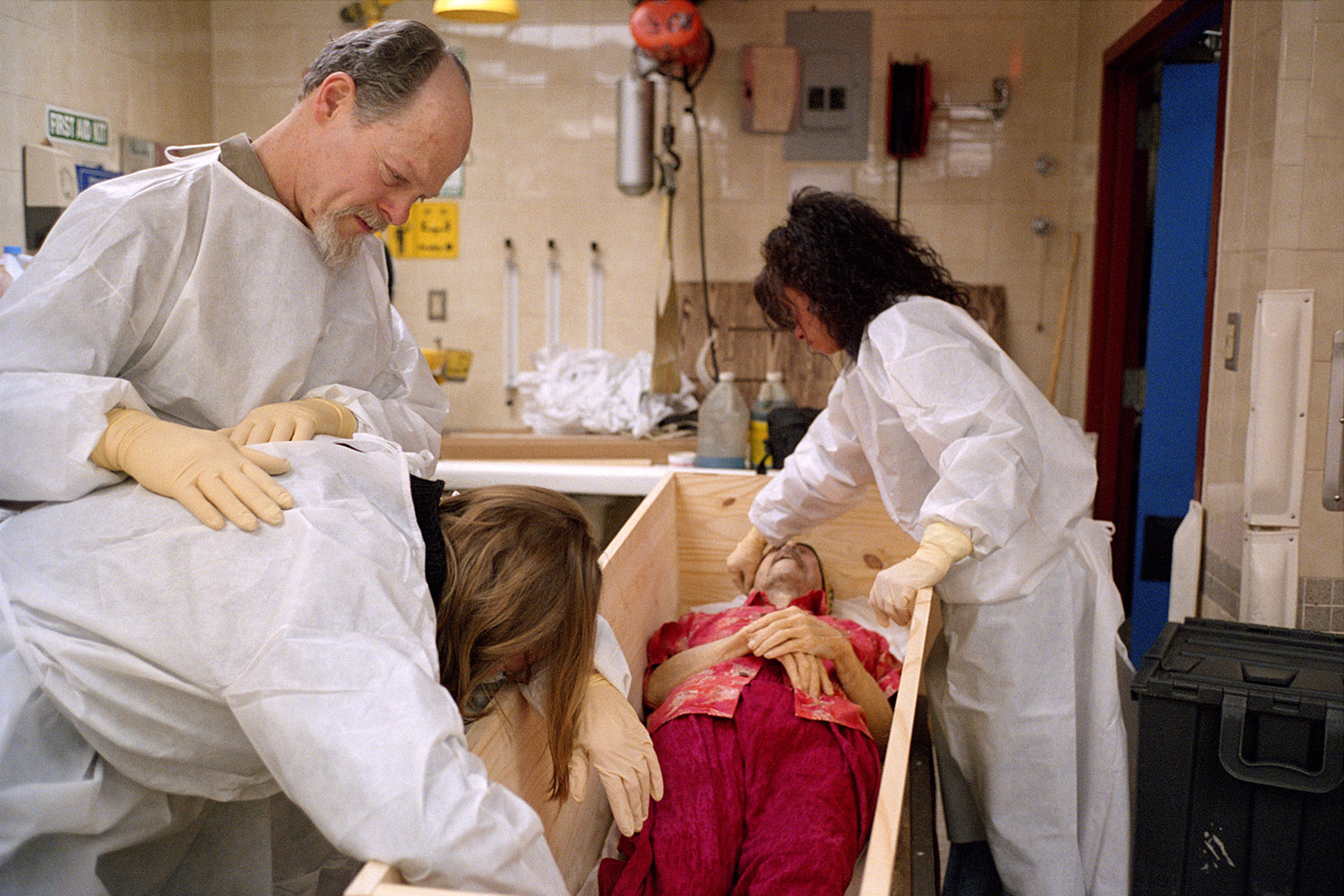
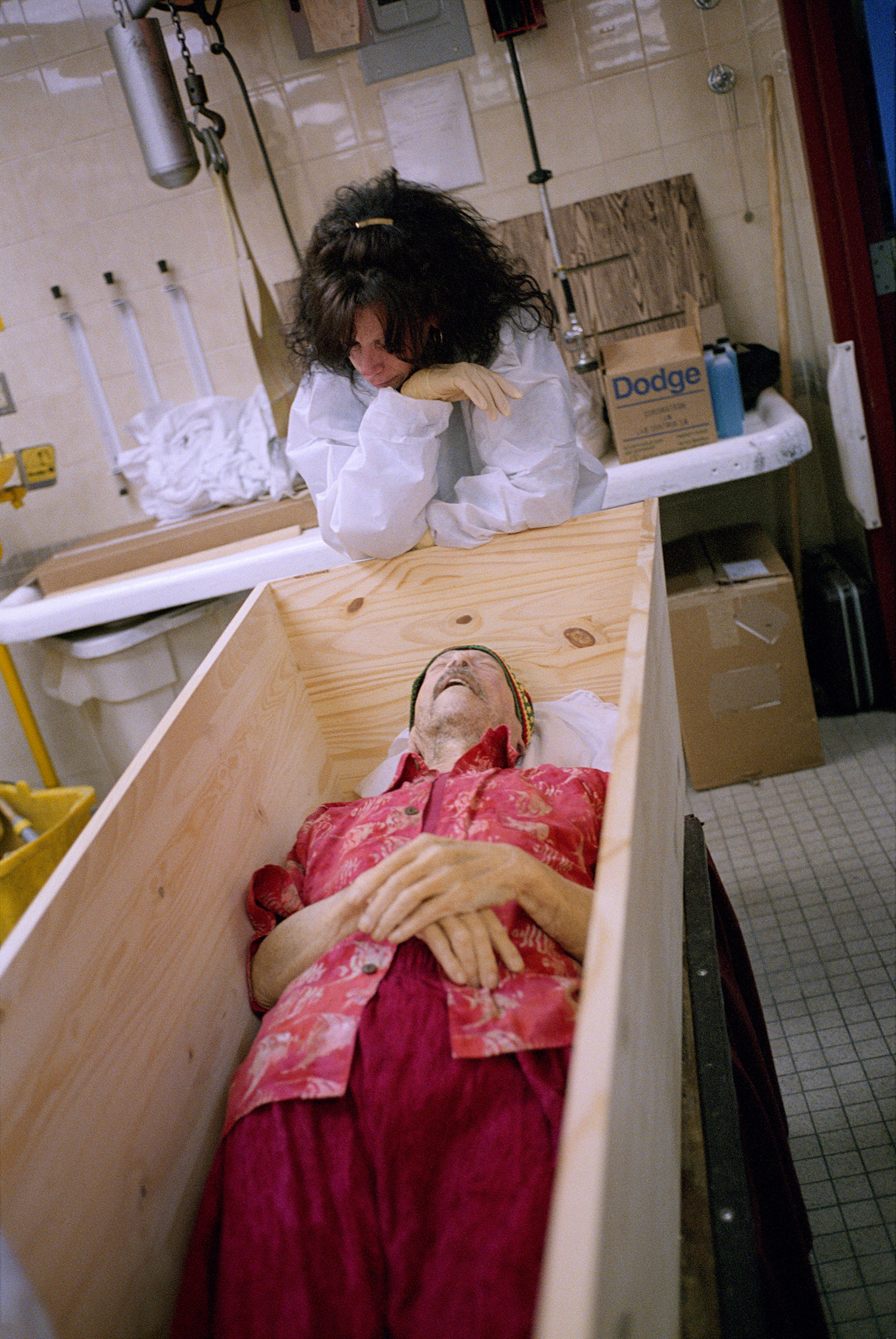
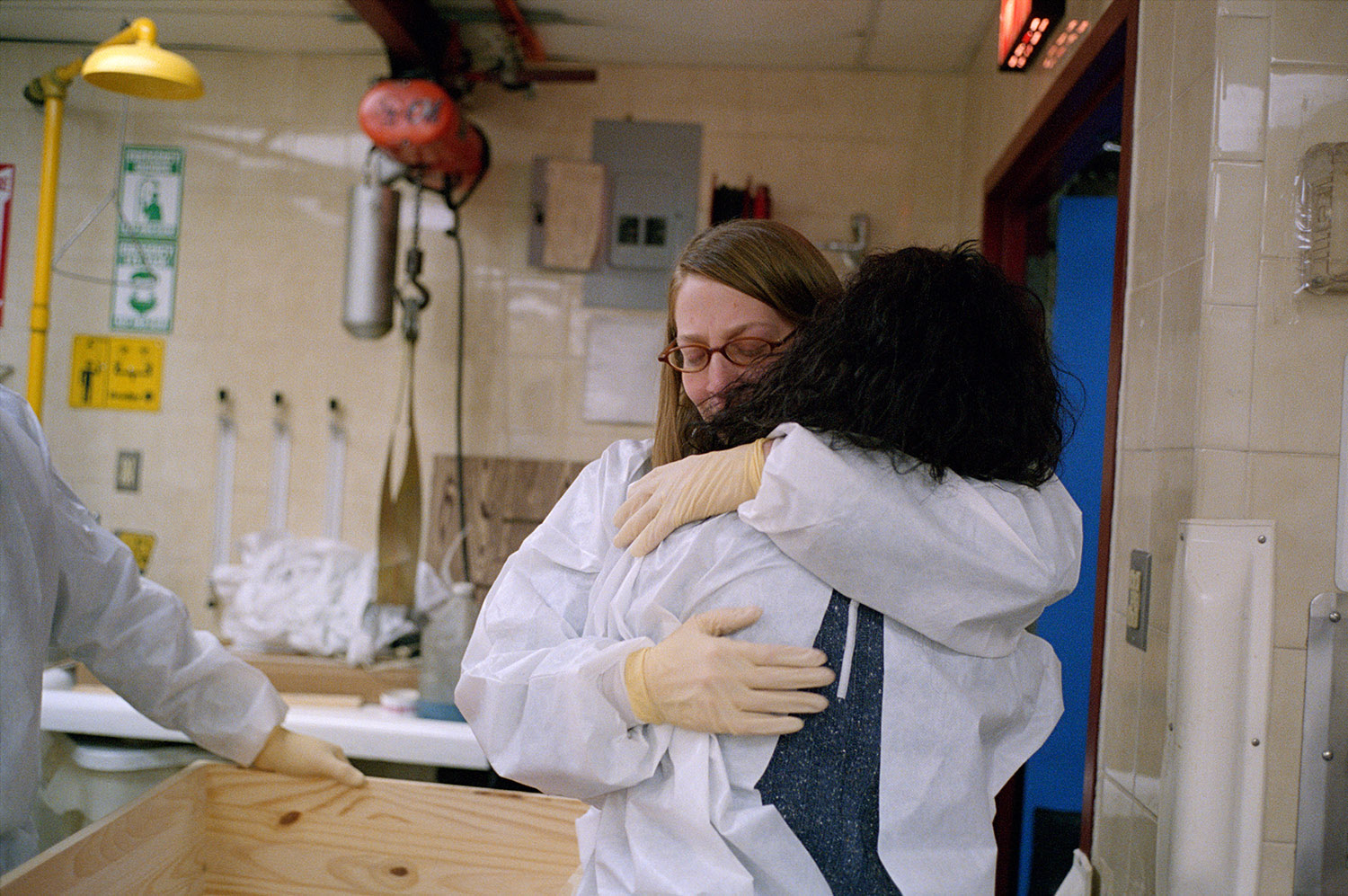
These photographs describe a love story. The story is about a husband, his wife and their two daughters. The wife is me, Niki Berg. The husband is Peter. We were married for 35 years. As our friends and family gathered, I had a sudden realization that I Wanted to be the person to prepare Peter for the funeral service.
I contacted the local chapel and asked if our family could do the washing and dressing of the body. In the Jewish faith, this is called a Taharah and is traditionally performed by religious specially trained people of the same sex as the deceased, so my asking to do this myself was a first time request. After a flicker of hesitation, they agreed. I felt relieved and grateful to be given this privilege. As well as wanting to spend this time with Peter, I knew he would not want strangers caring for him.
Without a pre-conceived plan, I grabbed my camera. As it turned out, these spontaneous photographs would be a continuation of my previous work with illness, family and healing. And as I realized later, I was also working within a long-standing 19th and early 20th century tradition of postmortem photography.
Peter was a very colorful person. I wanted him to wear his favorite clothes, so I chose his red Hawaiian shirt, favorite red pants , red socks and one of his wonderful hats. Assisted by our two daughters, a close friend and a representative from the funeral parlor, we invented a ceremony as we went along. It included the ritual cleansing of the body, as well as a Native American purification sage-smudging ceremony.
For all of us, this experience created a powerful sense of comfort and a knowing that, as an article in the New York Times so eloquently stated, “You have such an extraordinary sense of what it is to be alive and yet you feel comforted that a bridge had been created between being alive and being something else.”